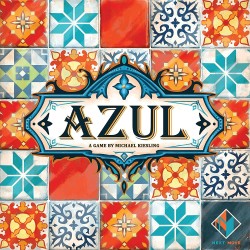Abstract
Brand: Plan B Games
Model: BGNM1514
Azul: Crystal Mosaic contains double-sided player boards, with each board offering new challenges and exciting new strategic opportunities.The "Crystal Mosaic" of the title is actually a plastic overlay that provides a recess to keep tiles from being accidentally bumped out of place. Four ..
$23.99
2 - 4
45
7.3
1.9
Brand: AEG
Model: BGNM1007
War Chest is an all-new bag-building war game! At the start of the game, raise your banner call (drafting) several various units into your army, which you then use to capture key points on the board. To succeed in War Chest, you must successfully manage not only your armies on the battlefield, but t..
$60.99
2 - 4
30
7.9
2.3
Brand: Plan B Games
Model: BGNM1066
Introduced by the Moors, azuleijos (originally white and blue ceramic tiles) were fully embraced by the Portuguese when their king Manuel I, on a visit to the Alhambra palace in Southern Spain, was mesmerized by the stunning beauty of the Moorish decorative tiles. The king, awestruck by the interior..
$53.99
2 - 4
45
7.8
1.8









-250x250.jpg)


-250x250.jpg)




